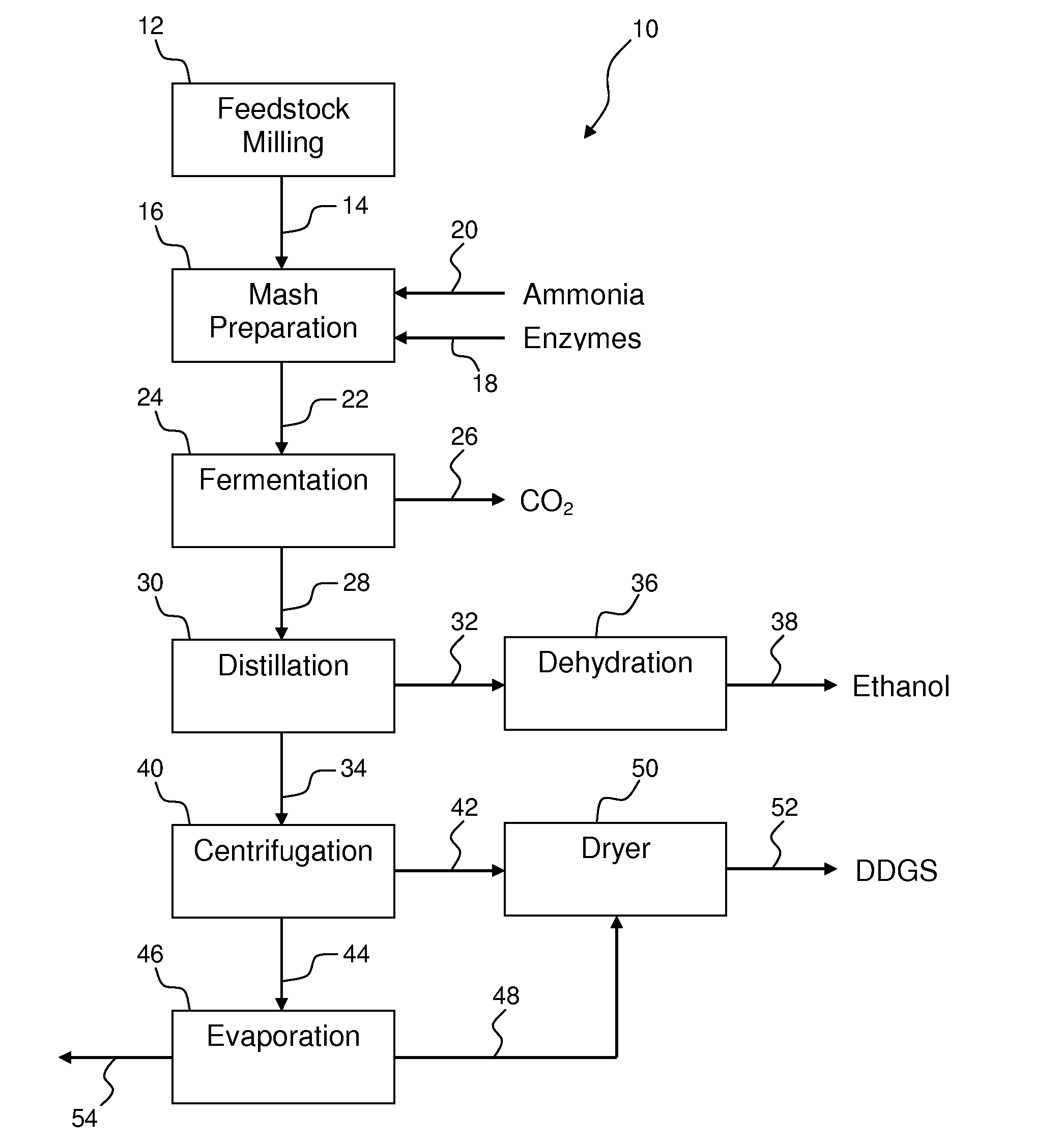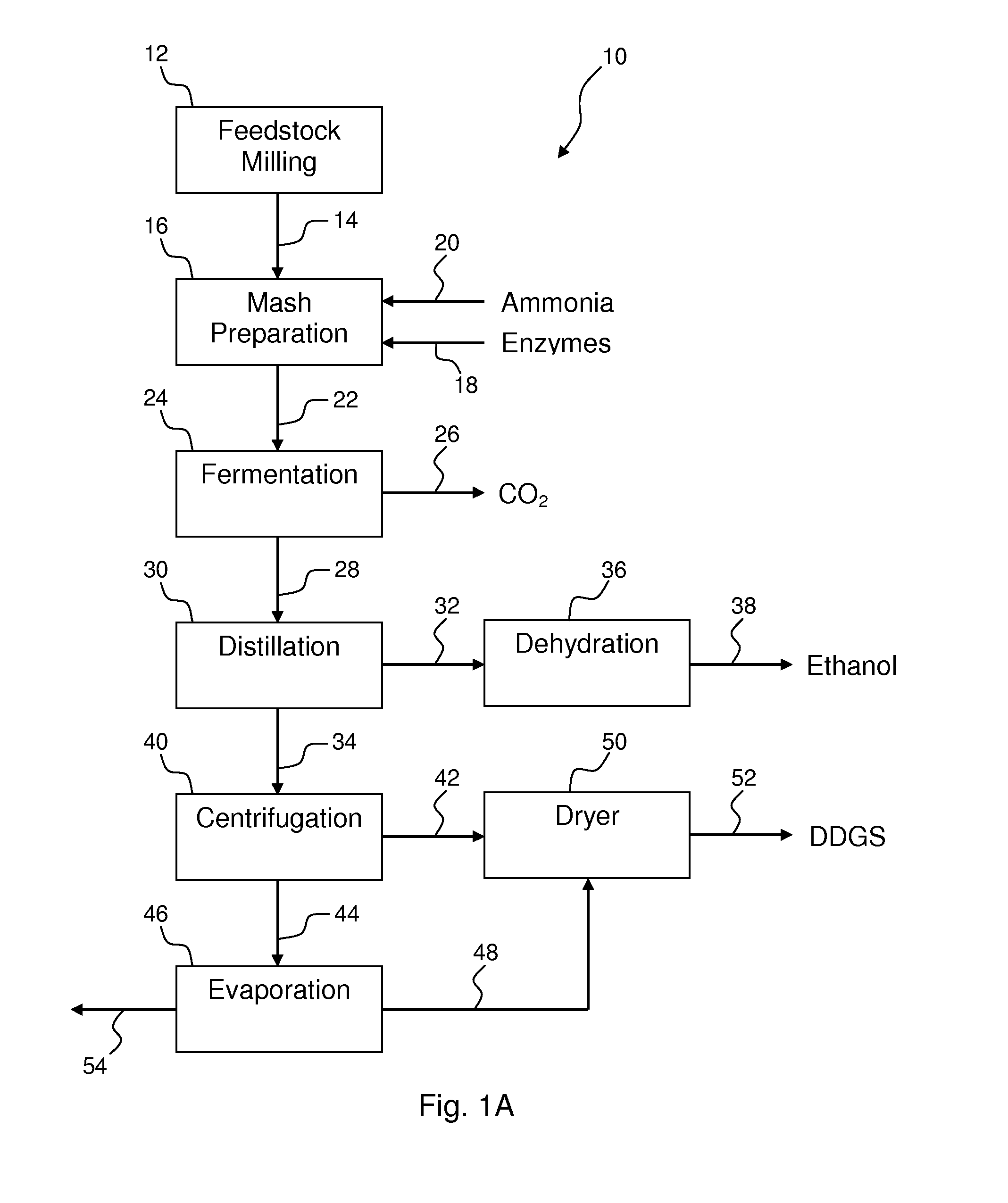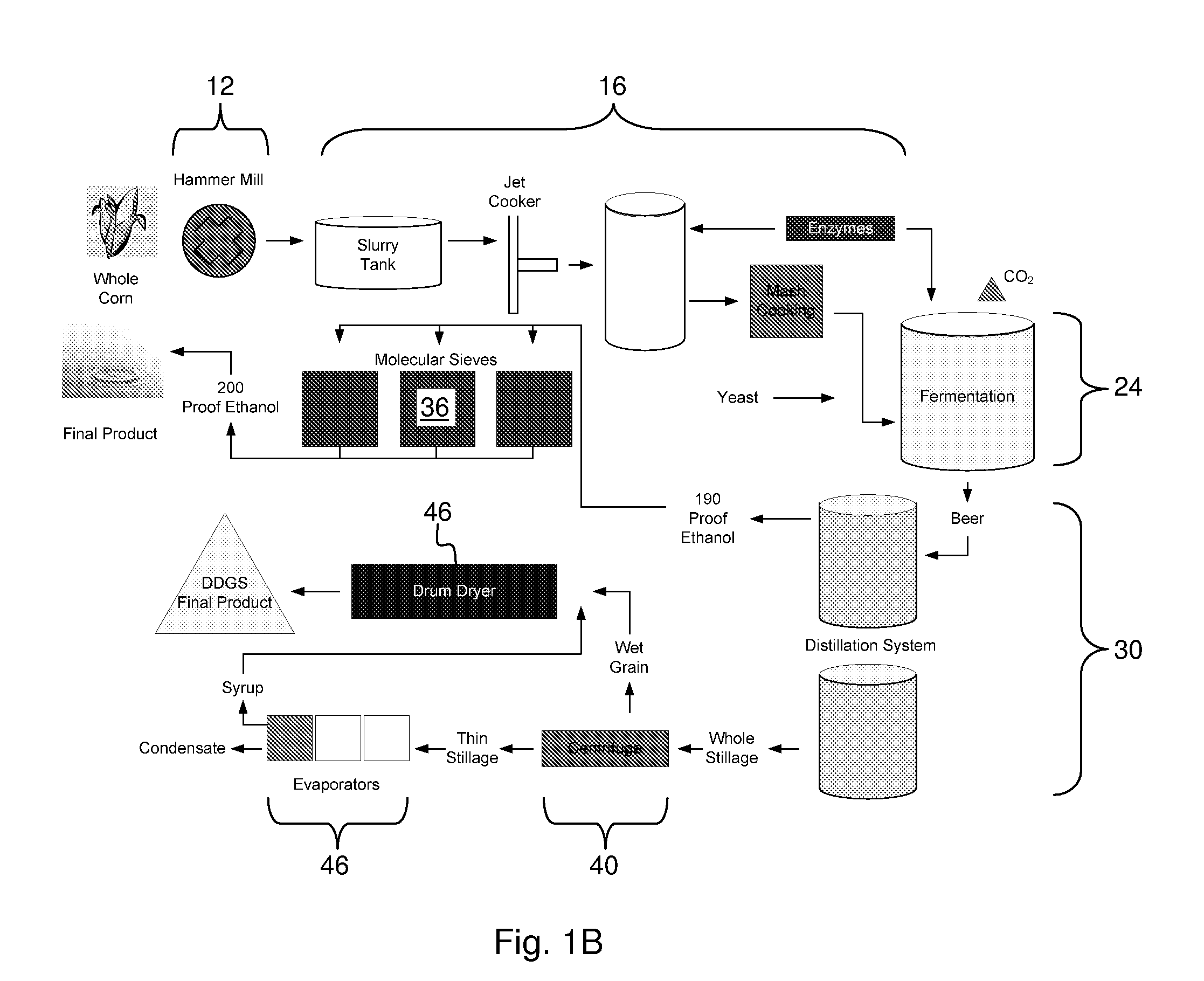Process for improving the yield and efficiency of an ethanol fermentation plant
a technology of ethanol fermentation and ethanol, which is applied in the direction of fermentation, biofuels, etc., can solve the problems of limiting the usefulness of animal feed and the complex carbohydrates in fermentation processes, so as to improve the yield and efficiency of the ethanol fermentation process, improve the value of stillage, and reduce viscosity
- Summary
- Abstract
- Description
- Claims
- Application Information
AI Technical Summary
Benefits of technology
Problems solved by technology
Method used
Image
Examples
example 1
[0063]The following non-limiting example is one of many possible implementations of the apparatus and method within the scope of the present invention. It illustrates possible energy savings resulting from separation and recycling of the liquid phase from whole or thin stillage and the use of solid phase from the whole or thin stillage in an anaerobic digester.
[0064]The liquid phase following fermentation and distillation processes has a temperature of about 60-70° C. (140-160° F.). The required energy to raise the temperature of fresh water consumed in the front end of the fermentation, is estimated at 123.8 million BTU (assuming a 100 gallon per minute influent water rate). The temperature to heat water is calculated in British thermal Units (BTU) where one BTU is described as the energy required to raise one pound of water, one degree Fahrenheit. Assuming an average temperature of the influent is 2.5-3.5° C. (36.5-41° F.). Raising the temperature to approximately 65° C. (or in Fa...
PUM
| Property | Measurement | Unit |
|---|---|---|
| concentration | aaaaa | aaaaa |
| temperature | aaaaa | aaaaa |
| temperature | aaaaa | aaaaa |
Abstract
Description
Claims
Application Information
 Login to View More
Login to View More - R&D
- Intellectual Property
- Life Sciences
- Materials
- Tech Scout
- Unparalleled Data Quality
- Higher Quality Content
- 60% Fewer Hallucinations
Browse by: Latest US Patents, China's latest patents, Technical Efficacy Thesaurus, Application Domain, Technology Topic, Popular Technical Reports.
© 2025 PatSnap. All rights reserved.Legal|Privacy policy|Modern Slavery Act Transparency Statement|Sitemap|About US| Contact US: help@patsnap.com



